Posts Tagged DK Landscaping
Protect Gardens In Winter By Mulching
Winter is just around the corner and its important to protect your garden from the most unbearable conditions. You want to do all you can to prepare and offer protection for when that time arrives. How do you protect gardens from the snow and ice? The answer is easy, mulching. In preparation for winter this practice is an excellent way to protect your plants during this cold period.
Mulching Helps Plants To Stay Warm In Cold Conditions
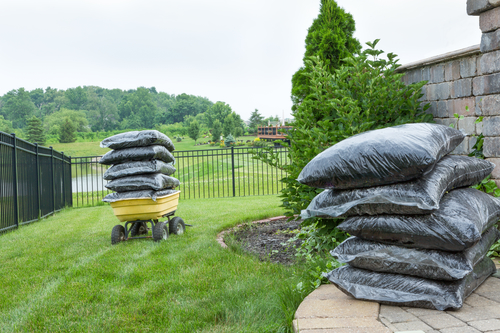
A responsible gardener would ensure that they mulch their plants as a preventative maintenance measure. Generally mulching plants in extremely cold conditions helps to provide an effective type of insulation that prevents them from freezing and thawing rapidly. It also serves to prevent plants from becoming shallow-rooted plants and bulbs caused when plants are lifting out of the soil which can damage delicate grafts.
If you experience brutal winters or nighttime temperatures below 20 F. (-8 C.) mulching plants in your garden may be the smartest decision.
Effective Winter Mulching Tips
Mulching is a great way to keep your plants active throughout the winter season and prevents them from becoming dormant. For instance if active plants that aren’t mulched decide to put out new growth at this time there’s a possibility that plant tissues can become damaged by nighttime frost. This can create entry points for many dangerous fungal and bacterial pathogens that are capable of causing serious harm to plants. In a nutshell mulching provides adequate protection to plants ensuring they bloom free of pests.
Gardeners can make use of a variety of organic materials suitable for winter protection including hardwood bark, straw, chopped corn cobs, grass clippings and pine needles. Nevertheless be sure to keep mulch at least one inch away from crowns and stems when making applications to prevent choking, damage or rot.
Gardeners should also take care to remember that organic mulches carry a low nitrogen content therefore before laying mulch you should first fertilize soil with a high-nitrogen product such as blood meal or fish meal to increase nitrogen levels in the soil.
Need Help With Winter Mulching? Dk Landscaping Inc. Is Here To Help
If you don’t know what to do or need help with your winter mulching don’t hesitate to give us a call at DK Landscaping Inc. at: (707) 280-3632 we’d be happy to come and give you a hand.
Here at DK Landscaping we strive to offer the highest quality landscaping and gardening services in Northern California.. Give us a call today or you can contact us online for more information on how you can take better care of your garden.
Tips to Get Gardens Ready for Winter
With the year slowly coming to an end and winter quickly approaching the outdoors can turn into a dull and inhospitable place forcing most people to remain indoors however, for garden and landscape enthusiast alike this time of year is the ideal time to prep gardens, lawns and surrounding landscapes for the upcoming growing season.
Keep Gardens in Shape During Winter

In the fall or just before winter most trees lose their foliage however at this time maintenance practices like pruning or trimming are encouraged during the latter months of the year as during this time of dormancy the majority of hedges, shrubs and trees can be pruned or trimmed without causing damage to the plant or tree.
This practice not only eliminates dead cumbersome branches from trees and plants but it also helps to improve their growth and shape while maintaining the general health of gardens.
As for the multitude of leaves that constantly fall and cover gardens at this time of year making it a practice to regularly clean gardens is extremely important as it allows garden beds and lawns to receive adequate sunlight which helps to promote optimal growth and health.
Another very important factor that gardeners should consider when preparing gardens for winter is the protection of plants from potential damage or destruction. Given the extreme conditions that come along with winter one clever tip that has proven to be an effective approach for protecting gardens during this extreme period is mulching.
Mainly used to help soil to retain moisture, regulate soil temperature and suppress weed growth mulching is also a great way to shield and protect plants against the hostile conditions of winter. Planting beds should be mulched at a depth of 1.5 – 2 inches to ensure plant roots remain the right temperature as well as to offer the right amount of protection from any potential damage.
Contract a Professional Landscaping Service
Not everyone may have the equipment to carry out trimming and pruning effectively and as for large, dead, trees and decayed branches hanging around gardens it’s best to contract trained professionals to manage tasks such as these since decayed trees and branches can pose serious threats of injury. Therefore contracting a professional landscaping service to manage tasks that might require equipment and trained personnel is the safest option.
Need Help with Preparing Your Garden for Winter?
Here at DK Landscaping Inc. we understand how tedious it can be to manage gardens on your own however we like to say that “We like Jungles” and we’d be happy to come in and assist you with all your garden preparations for winter.
We aim to provide the highest quality landscaping and gardening services to all clients. Our services are very affordable and we work with clients to manage any type of surroundings. Give us a call at: 707 217-6508 or visit our website: dklandscaping.com for more information.
How Mulching Can Benefit Your Garden
In seeking to maintain or improve the growth and health of trees, plants and flowers in gardens there are several practical, techniques that gardeners can apply. One approach that has proven to be very effective in helping to promote the health of gardens is mulching.
Mulching can be used for Multiple Purposes
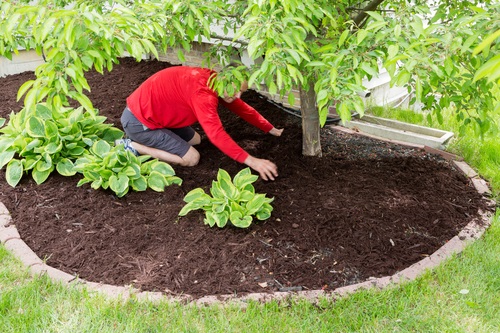
Mulching refers to the practice of applying a layer of material to the surface of soil. Mainly it is used to improve soil health and fertility, retain soil moisture and reduce weed growth. Mulching can be utilized in several different, areas including vegetable gardens, flower beds and surrounding landscapes. It is so effective that it allows gardeners to spend less time plucking up weeds, watering gardens and fighting pests.
Apart from its main uses mulch can also be used to lend additional support to plants by helping to stabilize them as well as help to enhance the visual appeal of gardens.
Types of Mulch Gardeners can Utilize when Mulching
When mulching gardens there are two basic kinds of mulch that gardeners can use these are organic or inorganic mulches. Generally organic mulches consist of numerous materials including straw, grass clippings, chopped leaves, shredded bark, wood chips and sawdust and inorganic mulches are mainly comprised of gravel, stones, geotextiles and black plastic.
Nevertheless both types of mulch can be used to deter weed growth and improve soil quality however with organic mulches soil is improved gradually as the organic material decomposes while inorganic mulches don’t.
Important Tips to Consider
If mulching to combat weeds there are a few things that people should keep in mind if it is to be done properly and effectively. Firstly it is recommended that mulch be laid down over soil that has already been weeded and secondly it should be laid down thick enough to discourage the reappearance of new weeds.
Considering this the thickness of mulch placed over soil should range around 4- 6 inches though a 2- 3 inch layer normally suffices in areas that have more shade and weed growth is not as prevalent.
Another very essential tip gardeners can utilize when mulching is the addition of nitrogen products to soil. Products like blood meal or fish meal can be used and should be applied before the mulch is laid as organic mulches usually have a low nitrogen content and this can help to increase nitrogen levels in soil so that plants get the desired nutrients.
Nevertheless one of the most important things that gardeners should take care to remember when mulching is how they place the mulch. When laying down mulch it should be kept no less than an inch away from crowns and stems of plants. This is mainly because wet mulch resting against the stems of flowers and vegetables can cause rot. Therefore it would be wise to ensure that mulch is placed at the appropriate distance to prevent this from happening.
Need Help with Mulching Your Garden?
If you don’t know what to do or need help mulching a large garden area don’t hesitate to give us a call at DK Landscaping Inc. at: (707) 280-3632 we’d be happy to come and give you a hand.
Our services are prompt and professional and our prices affordable. Here at DK Landscaping we strive to offer the highest quality landscaping services to clients so give us a call today or you can check out our website: dklandscaping.com to have a look at the services we offer.
Fall into These Horticulture Habits for Winter
Shuttering your garden for the fall is easier than you might think. You probably already know to clean up any debris and uproot weeds that love nothing more than to spread, but there are a few more horticulture steps that can really put you on the right path for a renewal in spring and bounteous summer harvest.
Get Your Garden Cleaned Up
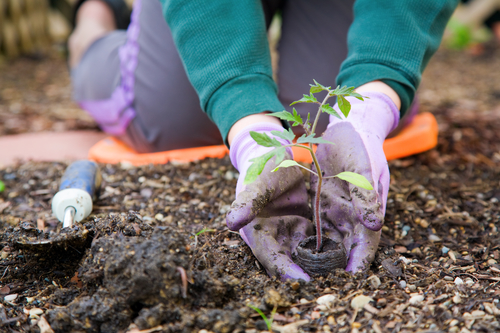
It might be tempting to dust off your knees, climb out of your garden, and let nature take its chilly winter course. The thing to realize is that while that might be easier now, you could be setting yourself up for more work later. Prepping your soil – and perhaps planting a cover crop – and replenishing your mulch can make life so much easier in early spring next year.
You want to remove any weeds you find or decayed plants before your ground gets too cold. A professional landscaping company can help you remove weeds, prune perennials, and even turn your fall leaves into mulch and compost that nourishes your soil year round.
If you’re really strapped for time, though, and you don’t want weeds to grow then put plastic or cardboard over existing weeds and leave that cover on through the winter to keep weeds from spreading. Or call on DK Landscaping and get landscaping experts to clean up your garden in time for winter.
Making a light pass of your garden with a tiller can also clear your garden of insects that plan on overwintering (spending the winter) in your soil. Insects like grubs and beetles want to hunker down and spend the winter in your soil, but these same insects can ruin your plants and screw up your soil!
A Horticulture Essential: Prepping Your Soil for Winter
The plants in your garden are actually more complex than they might look at first glance. When your garden’s soil doesn’t have the nutrients that your plants need to grow to their full potential, they emit stress hormones that can make it easier for nearby insects or diseases to take hold of your garden. That’s obviously not what you want.
Late fall might actually be the best time of the year to call on a company like DK Landscaping to test your soil to make sure that it contains the right kind of nutrients to promote plant growth. DK’s horticulture experts will look to see how much organic matter is in your soil, gauge the level of mineral nutrients in your soil that your plant roots can absorb, and measure levels of potassium and phosphorous.
(Nitrogen, phosphorous, and potassium are your soil’s three main macronutrients. Potassium helps for water retention in your garden and nitrogen and phosphorous ensure that you get early growth and healthy roots.)
That might sound really complicated, but a simple test can tell you a whole lot. Something as simple as adding lime to your soil can help bring your soil’s pH into balance too. Adding lime is also really good to do in late fall because it takes a while for the soil to absorb it. Time is your friend in the winter months when your garden is basically laying fallow.
Leaves are Solid Gold for Your Garden
Once you’ve tested your soil, you’re going to want to apply some kind of mulch (goes on top of soil) or compost (goes into soil). Chopped-up leaves sprinkled over your garden will enrich your soil, improve water retention, and stop weeds dead in their tracks.
DK Landscaping can handle more complex horticulture and help you with regular garden maintenance, irrigation, and general landscaping in fall and throughout the year.
Flood-Resistant Yard Maintenance Tips For the Rainy Season
Mother Nature can be unpredictable. And if you live in Rohnert Park, your home could be part of 4,813 properties with a 26% risk of flooding. Water rushing through your yard, threatening to wash away all your hard work, and turning your lush oasis into a waterlogged nightmare, becomes a significant concern.
While there’s not much you can do to control the weather, there are steps you can take to ensure your yard is as flood-resistant as possible. Here are practical strategies to fortify your yard against floods, protect your precious plants, maintain proper drainage, and prevent erosion to keep your outdoor space looking its best, even when the water starts rising.
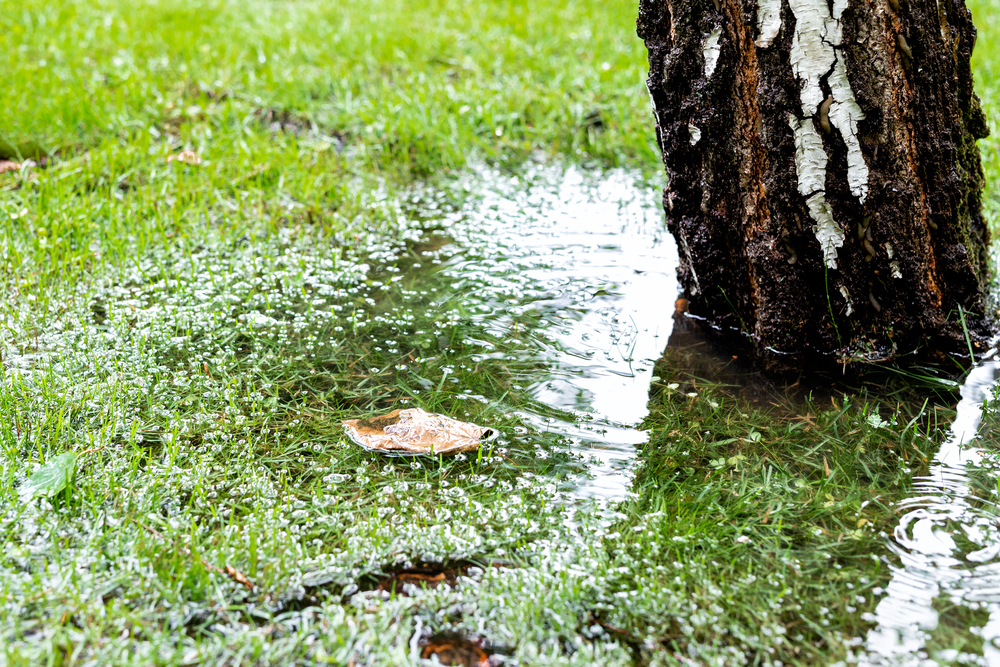
Choose Flood-Resistant Plants for Your Yard
Flood-resistant plants possess unique characteristics that allow them to withstand and thrive in waterlogged conditions, ensuring the resilience of your outdoor space during heavy rainfall or flooding events. Here’s how it works:
- Enhanced drainage: Water-loving grasses like blue grama, willows, cypress, and shrubs like elderberry have well-developed root systems that improve soil structure and drainage. Their extensive root networks act like natural sponges, absorbing excess water and preventing it from pooling on the surface. This reduces water accumulating in your yard, eliminating the potential for flooding.
- Erosion control: Heavy rainfall erodes soil, washing it away, which causes damage to your yard and nearby areas. Plants with deep and fibrous root systems help anchor the soil, preventing erosion while maintaining the integrity of your landscape.
- Water filtration and nutrient retention: Flood-resistant plant root systems act as natural filters, removing pollutants and sediment before the water reaches groundwater sources or nearby water bodies. These plants also absorb excess nutrients, like nitrogen and phosphorus, commonly found in stormwater runoff, effectively preventing water pollution.
When picking vegetation for your yard, opt for species native to Califonia, like buffalo grass. They have evolved and adapted to thrive in the local climate, soil conditions, and rainfall patterns, making them inherently more resilient to natural disasters.
Incorporating native flood-resistant plants further aligns your yard with the surrounding ecosystem, promoting biodiversity. Take advantage of online tools to help you find the most appropriate native species for your specific region in California.
Better Your Drainage System
A qualified yard maintenance rohnert park landscaper can help you improve how water moves and drains within your yard, effectively mitigating the risk of flooding and minimizing potential damage. Landscaping strategies to improve yard drainage include:
- Grading and contouring: Proper grading and contouring direct water towards suitable drainage outlets, such as swales or storm drains. The land should slope away from the center of the yard, guiding water to flow away from vulnerable areas. A skilled landscaper will evaluate the topography, re-level any spots where water pools, and make adjustments to ensure optimal drainage paths.
- Install French drains or catch basins: French drains and catch basins are effective drainage solutions that divert excess water from your yard. French drains consist of perforated pipes covered by gravel, facilitating water absorption. Catch basins, on the other hand, are underground structures that collect surface water and direct it to a suitable outlet. A professional can strategically install these drainage features in areas prone to flooding, preventing water from accumulating and causing damage.
- Gutter and downspout maintenance: Properly functioning gutters and downspouts are vital for effective drainage. A landscaper inspects and cleans your gutters regularly, freeing them from debris that causes blockages. Consider installing downspout extensions to direct water into proper drainage channels, preventing water from running into the yard.
- Rain gardens and bioswales: Rain gardens and bioswales are innovative landscaping techniques that improve drainage while enhancing your yard’s aesthetics. Rain gardens are shallow depressions filled with water-tolerant plants that can absorb and filter water. Bioswales are channels designed to collect and divert water, allowing it to infiltrate the ground gradually. Both features contribute to efficient water management, reducing the risk of flooding.
- Permeable paving: Replace impermeable surfaces, such as concrete or asphalt, with permeable alternatives like gravel, permeable pavers, or porous asphalt. These materials allow water to infiltrate the ground instead of pooling on the surface. Permeable paving also aids in drainage but also helps recharge groundwater resources.
- Add rain barrels: During heavy rains, the barrels capture and store stormwater that would otherwise flow into your yard, contributing to localized flooding. These innovative solutions save water, reduce water bills, promote sustainable gardening, and benefit soil and plant health.
Apply Hardwood Mulch
When applied as a protective layer on the soil surface, hardwood mulch acts as a barrier, preventing rainwater from directly impacting the soil and grass. Instead, water penetrates the soil gradually, promoting better infiltration and reducing runoff.
By improving soil structure, hardwood mulch helps create a more porous and well-drained soil, increasing the yard’s capacity to absorb and retain water during heavy rains. Hardwood mulch is preferred as it lasts longer and resists floating away better than lighter mulches.
Find a Qualified Yard Maintenance Rohnert Park Landscaper
From selecting water-loving plants to improving drainage systems, taking proactive measures is key to creating a flood-resistant yard. To guarantee the best results, seek the assistance of a qualified, credible, and licensed landscaping company. Take action today and partner with professionals to transform your yard into a beautiful, resilient haven that stands strong against the forces of nature.
Get the Best Bushes for Your Low-maintenance Garden
If you’re a busy homeowner, chances are you don’t want to add gardening chores to your overflowing plate. But you can turn your yard into a beautiful landscape bursting with color and life.
Proper planning allows you to create a stunning low-maintenance garden with colorful and evergreen bushes. These are hardy, slow-growing shrubs that require minimum pruning, saving you the hassle of frequent pruning.
Dig in and learn more about the best shrubs for your low-maintenance garden.
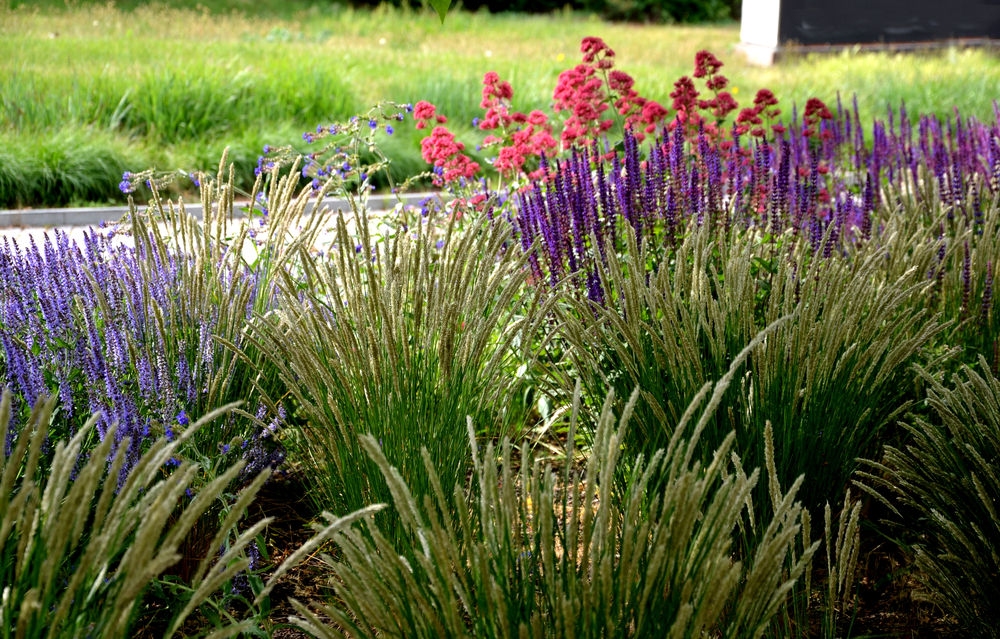
How to Choose the Best Shrubs for Your Home
The key to creating a low-maintenance garden is filling it with shrubbery that never grows out of control or requires constant pruning. It allows for a rewarding gardening experience that doesn’t saddle you with recurring chores.
1. Sunlight
The amount of direct sunlight your yard receives affects the growth vigor. Ideally, plants require at least six hours of direct sunlight to thrive. However, you can still create a lush and colorful yard with beautiful blooms and fabulous foliage if your yard receives 3 to 6 hours of direct sunlight. Insufficient sunlight can lead to stunted growth and weak stems and give your bushes a drab appearance.
Observe your yard on a sunny day and note the light and shade pattern. Creating a detailed light map paints an accurate picture of how much light your yard receives to help you create the perfect garden.
2. Rooting System
Root size is a priority consideration if your garden is near your house. Shrubs with extensive roots can damage your home’s foundation, sidewalk, driveway, or septic system, saddling you with expensive repairs. Shallow roots shrubs such as hydrangea, forsythia, camellia, rhododendron, plantain lilies, and boxwoods are ideal for such gardens.
3. Sunlight Preferences
It may come as a surprise, but shrubs have varying sunlight requirements. Some shrubs thrive in full sun, while others prefer partial or deep shades. Understanding sunlight preferences is crucial to planning your landscape. You can match them with the ideal location to ensure growth and survival and create a blooming garden.
4. Size
Paying attention to the height and spread of your preferred shrubbery helps eliminates landscaping problems. Shrubs fall into three broad categories—small, medium, and large.
- Small shrubs are under 3 feet tall with a spread of 1 to 4 feet.
- Medium shrubs are under 6 feet tall and spread 3 to 6 feet.
- Large shrubs grow up to 20 feet tall with a spread of 6 to 15 feet.
The Best Low Maintenance Bushes for Your Yard
These shrubs will help you create a beautiful, low-effort garden without saddling you with routine gardening chores.
Dwarf Alberta Spruce
Dwarf Alberta Spruce is a compact, evergreen shrub with a distinct pyramidal shape. The leaves are bright, green aromatic needles and are densely packed, giving the dwarf tree a tight, fuzzy look. Dwarf Albert spruce rarely grows above 13 feet and has an astonishingly slow growth rate. It only grows 2 to 4 inches yearly, so it rarely requires pruning and will probably never outgrow its designated space. It thrives in well-drained acidic soils and direct sunlight.
Knock Out Rose
Knock Out Rose is a hard flowering shrub renowned for its beautiful continuous blooms during the growing season. It showcases vibrant flowers in red, pink, and yellow colors. Despite belonging to the rose family, Knock Out Rose is notoriously easy to grow. It’s resistant to pests and diseases and self-cleans—sheds its spent flowers without requiring deadheading. It can grow up to 7 feet tall, thrives in well-drained soils, and requires at least six hours of sunlight daily.
Blue Star Juniper
Blue Star Juniper is a compact slow-growing evergreen shrub with dense, silver-blue foliage. Mature shrubbery is about 3 feet tall with a spread of about 3 feet. They feature awl-shaped needle-like leaves arranged in clusters on tiny stems resembling stars. The unique shape of these slow-growing shrubs adds beauty and appeal to any landscape. Blue Star Juniper is exceptionally hardy, requires little maintenance, and thrives in various soil conditions.
Boxwood
Boxwoods are hardy, evergreen shrubs renowned for their dense foliage, compact growth habit, and landscaping versatility. The growth height depends on the specific variety and pruning style but typically ranges from 1 to 15 feet. Dwarf cultivars tend to stay compact, growing to a maximum height of about 2 feet. Boxwood bushes are slow growing, usually about 12 inches a year, and have spread ranges from 1 to 10 feet. They produce tiny white blooms in spring, thrive in well-drained soils, and grow best in partial or full sun.
Rhododendron
Rhododendrons are a diverse group of shrubs renowned for their showy, colorful flowers. Their growth height depends on the variety and cultivar. Compact and dwarf cultivars are 1 to 3 feet tall, while large rhododendrons are usually 6 to 15 feet tall. Compact shrubs may have a spread of 2 to 4 feet, while large ones can have a spread of 6 to 10 feet. Rhododendrons thrive in coarse, acidic soils and require partial sun exposure.
Create a Thriving Low Maintenance Garden
Shrubs are ideal an ideal choice if looking to create a beautiful, low-maintenance garden. Carefully choosing the shrub varieties can help pepper your landscape with a mix of evergreen and flowering shrubs. Working with an expert service can help you make the best choices and transform your drab yard into a beautiful paradise teeming with life.
Get the best low-maintenance bushes for your garden. Contact us today!
Pro Tips For Sustainable Yard Maintenance
A well-maintained, healthy, and vibrant yard is a joy to look at and a pleasure to enjoy. It boosts curb appeal, increases property value, and contributes to community pride. If you’re looking for the best ways to maintain a beautiful yard without wasting resources or harming the environment, then it’s time to start thinking sustainably.
By implementing sustainable yard maintenance practices, you can save water, money and protect the environment from ecological damage. Whether you’re a developer looking to uphold the value of your properties or a homeowner seeking to create the perfect entertaining spot, these pro tips will help you take care of your yard in a responsible way:

Design a Water-Wise Landscape
Water scarcity is an increasing problem in parts of the world, with over two-thirds of the world’s population experiencing severe water scarcity for at least one month each year. This is why we must consider sustainable ways to keep your yard lush year-round.
You can conserve water used to maintain your yard by:
- Reducing and reusing water
- Increasing surface coverage
- Investing in an efficient irrigation system
- Choosing drought-resistant plants
- Incorporating rainwater harvesting systems
But before you start, it’s important to create a plan that takes into account the type of soil, climate, and region you live in. Here’s where a landscape design professional specializing in creating beautiful, water-saving yards comes in.
An experienced yard maintenance Rohnert Park landscaper will consider the Sonoma-Marin Saving Water Partnership design standards to create a sustainable and water-wise landscape that enhances the beauty of your outdoor space.
Practice Regular Yard Maintenance
If you want a yard that looks picture-perfect all the time, then regular maintenance is essential. You don’t have to invest a ton of money – there are sustainable ways to make sure your yard is thriving:
Mowing Your Lawn
Regularly mowed grass will stay healthier than grass allowed to overgrow and go weeks between mowings. Sustainable yard maintenance means ensuring your blade is sharp and not cutting off more than 1/3 of the grass blade at any given time.
Edging Your Yard
Have you ever noticed how professional landscapers make those crisp borders between the lawn and surrounding beds? That’s because they’re adept at using sophisticated edging tools for precision work around gardens, pathways, and driveways to give the yard distinction between different landscape design elements.
Pruning & Weeding Your Yard
Regular pruning removes dead or diseased branches to promote the healthy growth of flowering plants and vegetation in your garden. As far as weeds go – those pesky little buggers can sprout up even after you think you’ve gotten rid of them! To prevent weeds from regrowing and keep plants looking their best all season long, consider hiring a landscaping company with access to sustainable weed control methods like mulching.
Mulch It Up
Mulching can help reduce water loss due to evaporation and keep weeds from growing in between plants, which helps prevent competition for resources like water and nutrients from the soil. Top off your mulch every few months since it naturally degrades over time.
Choose Eco-Friendly Products
What you use to treat your plants and lawns can make a huge difference in the eco-friendliness of your yard maintenance routine. Whether it’s weed killer, fertilizer, or bug spray, you should always check the ingredients and assess their environmental impact.
Here are some pro tips for eco-friendly yard maintenance:
- Opt for organic fertilizers that contain composted organic materials such as plant residues, vegetable matter, and manure instead of synthetic fertilizers.
- Try using natural pest control techniques such as installing bird baths to attract predatory birds that eat harmful insects, companion planting (growing certain plants together to ward off pests), and using sticky traps instead of chemical pesticides.
- Request the landscaper to use slow-release fertilizers with fewer synthetic chemicals and minimally toxic herbicides instead of traditional products filled with harsh chemicals, which damage the environment in the long run.
Repair and Replace When Necessary
Sometimes, despite our best efforts, certain things in your yard just won’t last. Whether it’s a badly rusted sprinkler head or dying shrubs and trees, it pays to be proactive and invest in repairs or replacements.
The first thing to do is to diagnose the problem. You can do this by evaluating the structure’s condition by checking for signs of decay, metal rust, holes, and gaps in the grass. It’s best to have an expert provide an assessment.
Once you have a professional evaluation, you can decide whether to repair or replace the structure. If the system is relatively new, a repair is advisable. But if the design is over a few years old, you may need to replace it with an updated, much more durable model.
Find Yard Maintenance Services
Pursuing sustainable yard maintenance is easy with the right tips and tricks. Utilizing tools such as water-saving irrigation systems, native plants, and organic fertilizers is key for any Rohnert Park homeowner looking to maintain a beautiful and sustainable outdoor environment.
We provide small-scale and large-scale yard maintenance services focusing on sustainability and efficiency. We understand the importance of using eco-friendly practices while keeping your landscape looking beautiful and healthy year-round! Contact us today for more information about our sustainable yard maintenance services!
Landscape Irrigation: Best Practices and Tips
Mother Nature provides water for plants to help them grow. However, rainfall may not always be enough to maintain a healthy landscape and eye-catching beauty. That’s where irrigation comes in.
When done properly (preferably by a landscape expert), irrigation helps plants thrive when natural sources can’t satisfy your landscape’s water needs. To give you insights into the best watering techniques, we walk you through the following:
- Proper irrigation practices
- Water-saving irrigation techniques
- The ideal time to water your yards for the best results
If you don’t have the time to deal with irrigation equipment or implement best practices, a landscape maintenance company can do the heavy lifting. That said, understand what irrigation is and why it is essential in maintaining landscape beauty.
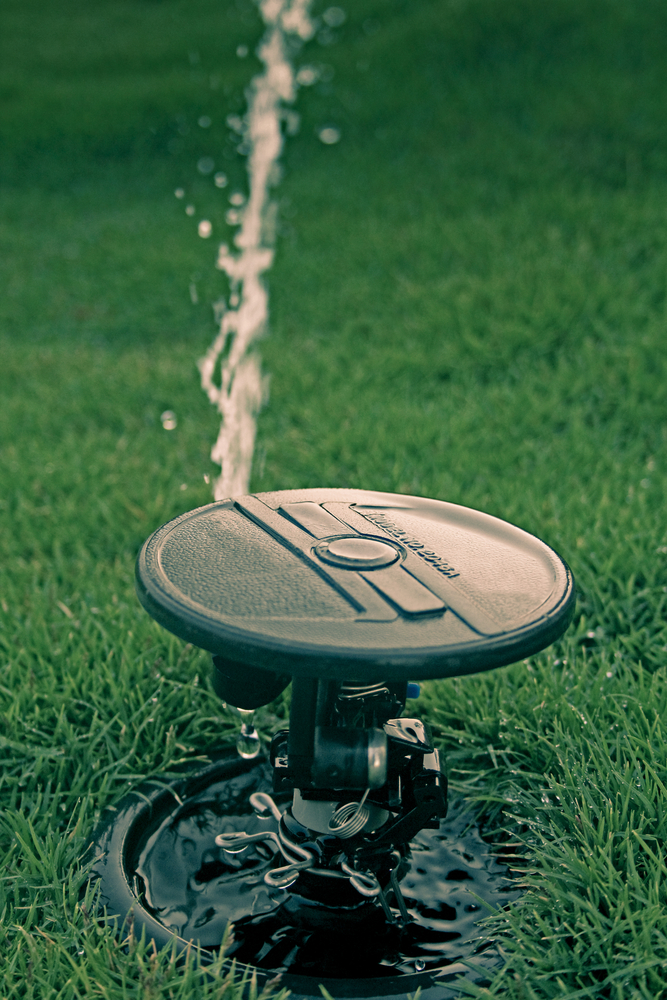
What Is Irrigation? (And Why It’s Important)
Relying on rainfall alone as your plants’ water source may not be enough during hot seasons or in areas with sparse or seasonal precipitation. In that case, watering your yards or gardens using pipes, sprinklers, or other artificial methods helps improve plant growth and quality.
Irrigation keeps your outdoor space looking pristine and green. When done properly (like with an expert), it can prevent patches in your landscape commonly caused by insufficient water. That said, you only enjoy the benefits of irrigation if you implement the right practices.
Top 3 Landscape Irrigation Tips
Here are some of the best practices when implementing landscape irrigation:
1. Leverage Mulching When Watering Specific Landscape Areas
Mulching means covering the soil surface around plants with an organic or synthetic substance to help conserve moisture by reducing evaporation after irrigation. You can buy mulch on Amazon and use it to preserve moisture when watering landscape trees, annuals, perennials, or woody plants.
When mulching is a water-saving technique, it’s important to do it right. Your mulch should not touch the stem of the plants or the trunks of landscaping trees, an improper practice called volcano mulching. Ensure the mulch is only covering the roots. That way, you prevent wet conditions on plant stems that can cause diseases.
2. Consider Drip Irrigation to Save Water
Drip irrigation is a watering method that uses a system attached to a water source and its components arranged throughout your landscape. Because it supplies water directly to plant roots, drip irrigation prevents water loss from run-off, evaporation, and overwatering. For this reason, a well-installed drip system can use up to 50% less water than conventional sprinklers.
3. Take Advantage of Regular Landscape Maintenance
Routine system checkups ensure your irrigation equipment is working correctly. Regular assessment helps identify and fix water-wasting problems before they impact your water bill.
Consider hiring a landscape maintenance company to inspect your systems at least yearly, especially at the beginning of the irrigation season. The company will check whether your irrigation system works efficiently and adjust features accordingly. The professional can also repair leaks and other system problems to save water.
However, not all landscaping companies are the same. Compare your options and choose one that is experienced and has an excellent track record. How long they’ve been in the industry, and online reviews should tell you who to hire.
Bonus Tip
Another way to save irrigation water is to use native plants. These plants are well adapted to the local climate and soil conditions. Therefore, they can thrive in their original environment.
For this reason, they require much less watering than foreign species because they can easily survive with the water supplied naturally by Mother Nature in their native environment. For instance, many native Midwestern plants in the US have deep root systems, which increase the soil’s capacity to store water.
What’s the Ideal Time of Day to Water Your Garden or Yard?
Irrigate in the morning, especially if you use overhead irrigation methods like sprinklers. Because leaf wetness increases the risk of plant diseases, irrigating in the morning gives plants enough time to dry during the day. Additionally, morning is the best time to irrigate because it allows water to sip into the soil—irrigating in mid-day heat when the high evaporation rate results in a lot of moisture escaping into the atmosphere.
Reliable Landscape Irrigation Services
Although it is possible to design a landscape that depends solely on rainfall, irrigation is sometimes necessary to maintain landscape health and aesthetic beauty. It supplies water to plants when needed most to ensure they thrive, even during seasons with much heat and little-to-no rain.
That said, proper landscape irrigation requires skills and enough time investment to get it right. If you don’t have time to implement irrigation best practices or just want to avoid guesswork, it’s best to hire a landscaping professional.
The professionals ensure your irrigation system is installed and functioning correctly. It can also be a way to identify water-saving opportunities in landscape irrigation. We specialize in water-saving landscape design (xeriscape), maintenance, repair, and irrigation. Contact us today to schedule an appointment.
From Fire Pits to Outdoor Lounges: Backyard Ideas for Every Style
Backyards are often overlooked when looking to create a comfortable and inviting home. With the right design and planning, you can make this outdoor space a beautiful extension of your living area. Sprucing your backyard creates the perfect space for relaxing or entertaining and can improve your health and wellbeing. Whether you have a tiny patio or a sprawling lawn, there are plenty of backyard ideas to transform your space into a true oasis.
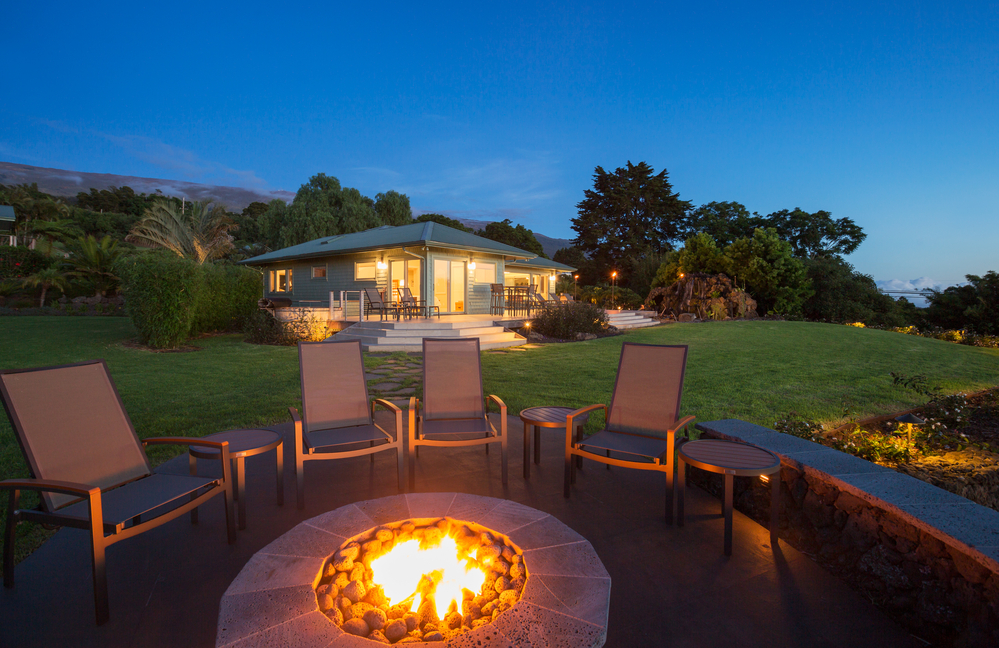
Outdoor Dining Area
An outdoor dining area can help you appreciate the Mediterranean climate in Sonoma County. You can enjoy the warm, sunny weather while sharing a hearty meal outdoors with friends and family.
A careful choice of dining table and chairs allow you to create a functional and inviting outdoor dining area. Teak or metal are ideal choices because they can easily withstand the elements. Incorporating outdoor pillows and cushions adds a splash of color and comfort to the space.
An umbrella or a pergola provides shade and protection from the sun to let you spend more time outdoors during the warmer months. They also add an element of design to the space, giving it a visually interesting and intentional feel.
If the space allows, you can add some greenery and natural beauty to the outdoor dining area by surrounding it with beautiful plants. Succulents, lavender, or rosemary make a great choice. These plants add visual interest, enhance the ambiance, and provide pleasant aromas.
Immersive Garden
Immersive gardens are great backyard ideas that improve curb appeal and uplift your quality of life. These are specially designed gardens that provide a fully immersive and sensory experience.
Immersive gardens go beyond the visual appeal to engage all your five senses, creating a truly unique experience.
Immersive gardens comprise plants, flowers, trees, and other elements carefully chosen for their sensory properties. For instance, jasmine, lavender, or roses stimulate the sense of smell. Ornamental grasses or lamb ears are incorporated for their unique textures.
The sound of running water in water features such as waterfalls, fountains, or ponds adds tranquility. Colorful plants create a visually stimulating environment, while edible herbs and plants engage the sense of taste.
Fire Pit
A fire pit is an excellent choice if you wish to use your outdoor space throughout the year. Installing a fire pit creates a warm, cozy, and inviting atmosphere to gather with family and friends. Since fire pits come in various shapes, sizes, and designs, you must pick one that fits your budget and available space.
Ideally, a fire pit should be placed on a level surface and at least 10 feet away from any structure or combustible materials such as trees or bushes. You can make fire pits from concrete blocks, bricks, or stone. Using a layer of fireproof mortar between the blocks helps increase a fire pit’s lifespan.
Adding a grate lets you whip up a feast over your fire pit and enjoy delicious flame-grilled meals with friends and loved ones.
Outdoor Lounge
An outdoor lounge is a perfect place to relax and unwind after a long day at the office. A cozy outdoor lounge provides the perfect backdrop to enjoy Sonoma County’s beautiful sunsets.
Pick a design that suits your personal style, available space, and intended use. Popular outdoor lounge designs include minimalist, rustic, bohemian, coastal, and Mediterranean.
Be sure to create a comfortable seating area by furnishing the space with outdoor sofas, chairs, and coffee tables. Use outdoor pillows and blankets to add colors and texture and give your outdoor lounge a comfy, inviting look.
A careful choice of plants and trees can add greenery to your outdoor lounge while providing shade and privacy. Rhododendrons, boxwood, holly, and camellia are popular shade garden choices and can provide year-round privacy.
Play Area
A play area is an excellent addition to any backyard for a family with young children. It provides a safe and fun space that encourages your kids to embrace outdoor play, which can drive creativity and improve physical health.
Naturally, the age group of the children is a primary consideration when creating a play area. Your options range from swing sets with multiple swings, slides, and climbing walls to sandboxes and outdoor toys such as trampolines, playhouses, and water tables. Sports equipment such as soccer nets and small basketball hoops are ideal for older kids.
A dedicated outdoor play area is crucial for healthy child development. It promotes imagination and creativity by allowing children to play pretend games by creating imaginary worlds. Games that involve climbing, swinging, running, and jumping enhance motor skills and help children improve balance, agility, and coordination.
Bring Your Backyard Ideas to Life
Thoughtful landscape design can help you transform your backyard ideas into a truly inspiring space that entices you and your loved ones to spend time outdoors. Working with a skilled landscaping service like DK Landscaping gets the job done quickly, professionally, and within your budget.
Our skilled experts can help you make the right choice from the get-go when you need a stunning yet low-maintenance backyard. From landscaping design to installation and maintenance, we can help bring your ideas to life and turn your backyard into a marvelous yet functional work of art. Talk to our landscaping experts today!
7 Reasons Property Owners Rely on Garden Professionals
Using a professional landscape maintenance company is a no-brainer for anyone who doesn’t enjoy yard work but wants their landscape to look its very best.
However, even avid gardeners and those who enjoy working outside find using a professional gardening service makes their life easier and enhances their efforts.
Here are seven reasons why hiring a garden service makes sense – no matter how much you enjoy working outside.
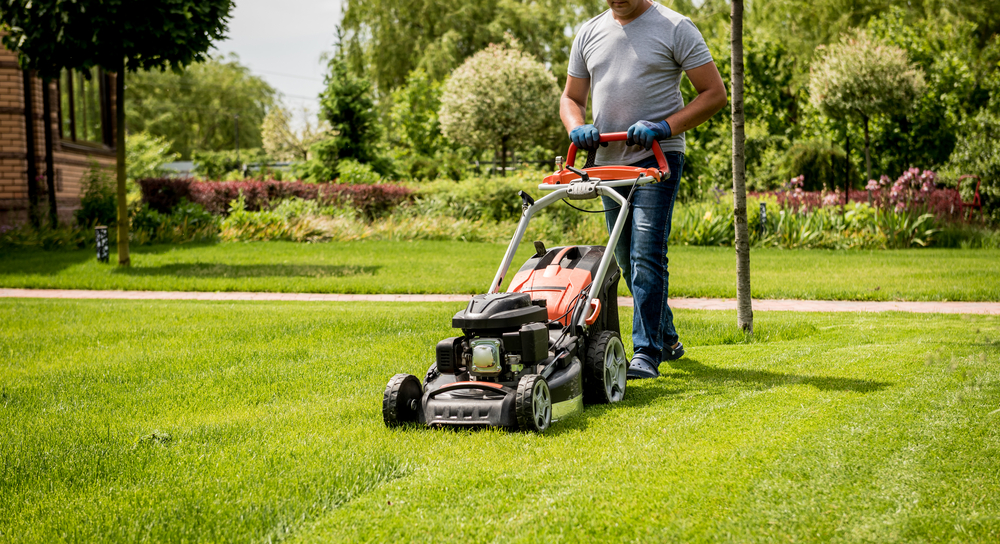
1. Increase year-round interest & curb appeal
Along with the regular yard maintenance routine, garden services include little extras that increase year-round interest and curb appeal. For example, we work with clients to:
- Ensure there’s color and interest during all four seasons.
- Hone in on the trees, shrubs, flowering plants, and grasses that make sense for their property’s microclimate.
- Expand their knowledge of native and non-native landscape options to keep things fresh and interesting.
- Take over the chores they don’t want to do themselves so they can focus on the tasks they enjoy most.
- Learn techniques, tips, or tricks to expand existing knowledge and expertise.
We always enjoy caring for yards and landscapes, but we’re especially inspired by homeowners who love to grow and nurture their landscapes as much as we do.
2. They work in more adverse weather conditions than the average gardener
Sure, working outside is wonderful – all that fresh air and sunshine does a body good. But what about the days that are hotter or cooler than you’d like them to be? Or the days when you feel under the weather yourself?
Your professional landscape maintenance team is there for you (almost) regardless of the weather, so you can stay comfortably tucked inside without worrying about whether the lawns are mowed or the shrubs are pruned.
3. We’re never in over our heads
Just as a foodie’s eyes may be bigger than their stomach, a garden lover’s eyes may be bigger than their available calendar days. A lush, beautiful landscape requires continuous work.
Sometimes that work is a little effort daily or weekly; other times, it requires a significant amount of labor day in and day out.
Garden and landscape professionals do this for a living, so our calendar is integrated with your landscape’s needs. In addition, we’re happy to take on extra tasks when you can’t get around to it, which means you never have to feel guilty about all of the yard work or gardening that isn’t being done – or about the new garden projects you never have time to bring to fruition.
4. You can enjoy cut flowers from your garden
Growing and maintaining a cut flower garden takes a tremendous amount of time, but the results are worth it when you see beautiful bases filled with blooms on your dining/end tables or other prominent surfaces.
Your professional garden crew can work with you to plant and cultivate your favorite flowers or blooms and foliage in your favorite hues. You’ll have beautiful blooms to cut and display whenever you want.
5. Maintain safe and attractive hardscape features
Over time, walkways crack or become uneven. The lighting features may have burned-out bulbs or electrical issues. Water features can plug or wear out, and the fire pit or planter surrounds may need updating. By scheduling weekly or bi-monthly garden service, you can rest assured the entire landscape – including its hardscape features – will be tended to regularly.
Some routine maintenance issues happen automatically, like simple leak repairs or bulb replacements. If and when more significant repairs or renovations are needed, we’ll let you know, provide an estimate and can schedule or perform that work for you.
6. We can redesign or expand your existing landscape
Are you ready to design a new area of your landscape? Is it time to rip out an area of non-native plants and replace them with a more water-wise xeriscape? Would you like to cultivate a garden that attracts more birds and pollinators – or repels the local deer?
All of that is possible when you use a professional garden service. We love working with clients who are inspired to continue the evolution of their landscape and garden environments. We are always there to provide insight, advice, and labor to ensure your landscape spaces serve your household’s current needs – whether that be a kid-safe space to play or an area that can handle the wear and tear of the beloved four-legged members of the family.
7. No need to have a single tool
Professional garden services bring all of the tools and equipment required for the job. That means you don’t have to own or maintain a single tool or garden-specific machine. There’s no need to purchase or store fertilizers or other amendments that keep gardens looking their best. We take care of all that for you, freeing up your garage and storage spaces.
Contact Us To Learn More About Professional Garden Service Options
We tailor garden services to meet customers where they’re at. Contact us to learn more about our service offerings and how we can keep your landscape lush and vibrant all year round.





